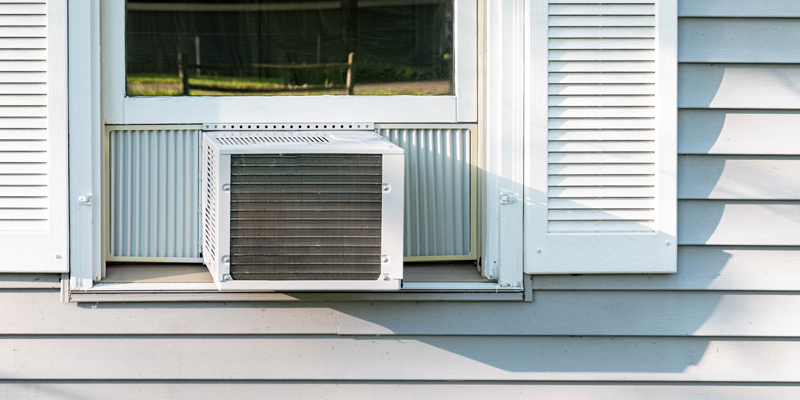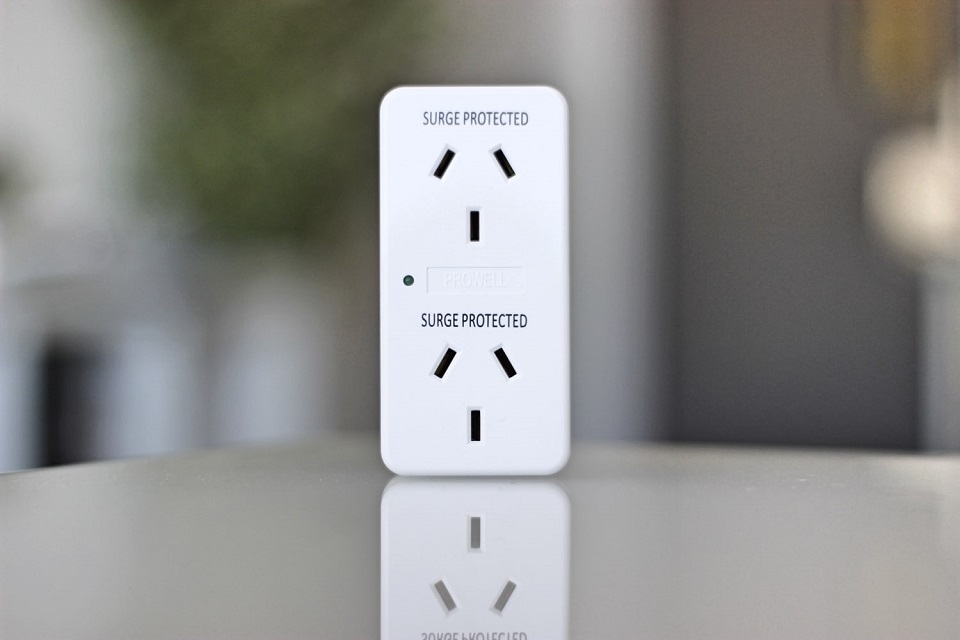

Staying cool in the summer can be tough without the right equipment. An air conditioner is a necessity to keep the heat and humidity at bay. These days, many people are opting for the best through the wall air conditioner unit as they do not require any ductwork whatsoever to install, and they also don’t take up your window space, so you can still use them whenever you want.
For this article, we’ve reviewed six of the best air conditioners on the market, with the Koldfront WTC10001W coming out on top. This model has several modes and fan speeds to choose from, a digital display, a remote control, and is also decently priced. The other units come in both 230V and 115V, with a few more features, and some even include heat functions.
When choosing a unit, you may want to check out some of the features. One is the BTU, which tells you how quickly and efficiently it will cool down a room. The coverage area shows the largest room size it will work in. The voltage determines the type of outlet it needs. You may also want to check the dimensions, so you know it will fit where you want to put it. As well as a comparison table with in-depth reviews, we have included a buying guide below to help you pick the best through the wall air conditioner to meet your needs.
More features: 24-hour timer; Energy Saver mode; Sleep mode
If you want the best through the wall air conditioner under $500, the Koldfront WTC10001W may be the right model for you. As a through the wall unit, it won’t take up precious window space while keeping you nice and cool.
This unit is 10,600 BTU with a coverage area of about 450 square feet, so it can keep a small apartment comfortable during the warmer months, plus has a heater for when a bit of warmth is needed. It does require a 230V outlet, though, so be sure you have one nearby to plug into.
This model includes a simple control panel, which allows you to adjust all the settings. There are three fan speeds to choose from, including 253, 275, and 293 CFM. The temperature range is 62-86 degrees Fahrenheit, so you can keep it as warm or cool as you like. For nighttime, there is a sleep mode, which automatically raises the temperature slowly for about six hours, then drops it down again for a cool wakeup and a lower energy bill.
There is a 24-hour timer, which allows you to set it to run only when you need it. The dehumidifier function takes some of the moisture out of the air during those damp months of the year. Included with the air conditioner is a handy remote control, so you can alter the settings as needed from anywhere in the room, without ever getting up out of your chair.
More features: LED display; temperature sensing LCD remote control
Though the summer months are hot, there can be some cooler days to deal with that need less cool air and more warmth. For these days, the best through the wall air conditioner with heat will come in handy.
The Keystone KSTAT10-2HC offers 10,000 BTU of cooling and 10,600 BTU heating that you can use to supplement your normal heating system when the temperature outside is 45 degrees Fahrenheit or more.
There are three speeds for both the cooling system and the fan and one speed for the heater. It also has multiple functions, including Auto, Sleep, Energy-saver, and a programmable 24-hour timer. The auto-restart saves the settings you’ve chosen if the unit loses power, so you don’t need to reset them when the power comes back on.
To choose your settings, there are electronic controls and an LED display that shows you the current temperature and any options you’ve chosen. There is also an LCD remote control with a temperature sensor that allows you to change those settings from anywhere in the room without getting out of your comfy chair.
There is a mesh filter in this unit that is easy to clean, plus the air conditioner has a check filter alert to tell you when to do so. The airflow is four-way adjustable so you can control which direction the cool or warm air is blowing. This model is great for rooms up to 450 square feet.
More features: washable mesh filter with tilt-out filter access and check filter alert
The best through the wall air conditioner heater needs to be energy-efficient to save on your energy costs. The Frigidaire FFRH0822R1 uses a low-power start-up, plus it includes an energy saver mode that runs the unit only when the temperature drops below a set level rather than all the time.
This model also has other great modes to choose from. Auto Cool Mode lets the fan adjust the speeds as needed when the temperature in the room changes. Sleep Mode lets the room warm up gradually while you sleep. There is also a 24-hour timer, so you can run it at specific times.
All of the functions and settings can be adjusted using the electronic controls or the full-function remote control, so you don’t need to get up to alter your choices. You can also pick one of the three cooling or fan speeds, or you can choose the heat setting for those cooler days.
The heater part is an actual heat pump, with 7,000 BTU, plus includes a 3,500 BTU supplemental heating ability to add to the system you already have installed.
This model can be mounted in the wall, or you can install it in a window using the window mounting kit that is included with the unit. For easy cleaning, there is a washable mesh filter that has tilt-out access, plus there is a check filter alert that tells you exactly when it needs cleaning.
More features: full range air direction control; Auto, Sleep, Dry and Energy-Saver modes
The Perfect Aire 4PATW12000 is a great model for those who need a powerful through the wall air conditioner for bedrooms, kitchens, or even small apartments. This model is powerful, with 12,000 BTUs to help cool down areas up to 550 square feet. It also has a decent temperature range of 62-86 degrees Fahrenheit.
There are three speeds to choose from in both the cool and fan modes, so you can run it as high or low as you like, depending on the day. There are also several modes to help increase your comfort level. These include Auto, Sleep, Dry, and Energy Saver, so you can pick the one you need at any time to keep you extra comfortable. There is also a timer for added convenience.
A full-function remote control comes with this model, which allows you to adjust all of the settings from across the room. There is also a room temperature sensor built right into the remote, so it can also be used as a thermostat if needed to help you maintain the perfect temperature in your home.
The full-range air direction control allows you to adjust where the cool air is blowing to cool down your home without sending it right in anyone’s face. There is a front-loading air filter for easy removal. This piece is also reusable, saving you some money on replacements filters.
More features: LED display; auto defrost; auto restart
If you want the best through the wall over 12,000 BTU air conditioner with heat that’s easy to install and to use, the COOPER AND HUNTER Packaged Terminal Air Conditioner is a great choice. This model goes as high as 14,700 BTU for cooling you down and 13,500 BTU for warming you up again.
This model doesn’t include a bunch of extra modes to figure out. You can choose cool, fan, or heat for the modes and three fan speeds. You can also input the temperature you want using the hidden digital control panel. There is a remote available, but it does need to be purchased separately.
The PTAC model also has a few other great features, including the auto-defrost, an auto-restart for power outages, and fresh air ventilation. It also includes a 6.5-feet power cord, though it does need a 230V outlet nearby to plug into.
Another reason to consider this model is the huge coverage area. It can heat or cool spaces up to 700 square feet, so you can use it for kitchens, living rooms, bedrooms, or even maintain a comfortable temperature in a small home or apartment.
Though this unit is a bit pricey, it does have fantastic warranties on all areas. It is long and thin, so you can fit it almost anywhere you like, plus it runs at 66 decibels at its highest setting, so it shouldn’t disturb you.
More features: 3 fan speeds; dehumidification mode
Those on a budget may not be able to afford a huge air conditioning unit, but the best small through the wall air conditioner may still be able to the job. The LG LW8016ER proves this with its decent coverage area, 8,000 BTU, and great features.
There are three speeds for both cooling and fan, so you can keep your home at a decent temperature during the summer or just keep the air circulating when it’s already comfortable in your home. The energy saver function lets you choose a temperature, then turns the machine off and on as needed to maintain it, which helps keep your energy bill nice and low.
There is a 24-hour timer, so you can set when you want it to turn on, which is perfect for those who work out of the house and don’t need it running all day long. This function, as well as the others, can all be altered using the handy remote control, though you do need a direct line of sight to the air conditioner for it to work properly. The settings also need to be reset after the unit is shut down and restarted again.
This model can be used mounted through the wall or in a window, plus it comes with the installation kit necessary for either of these options. The unit has a gold fin anti-corrosion coating to protect it from the elements.
If you live in an area that deals with heat during the summer months, you’ll likely need an air conditioner to stay comfortable in the summer. Of course, there is a wide variety of models available. The models we’ve reviewed here are all through the wall units, so though they don’t need ductwork or take up your window space, they still give you the same features as those other models. To help you pick the right one for your home, check out the sections below.
There are a few very specific benefits to opting for a through the wall air conditioner. The main one is that they are easy to install. They don’t need you to deal with a bunch of ductwork as you would with a central air unit. These models also leave your windows free, so you can open and close them as needed on those days when the air conditioner is not running, giving you some fresh air to breathe.
Because they are installed right into the wall, you also don’t need to remove them when the weather gets colder. This way, you can use it all year round if needed. They don’t stick out into your room, and many of them run rather quietly, so you won’t even notice it until you need to change a setting.
The best-rated through the wall air conditioner units are also energy-efficient since they have a tight seal, locking the cool air in and the warm air out. Many of them, like the Keystone KSTAT10-2HC, even include heating systems, so you can use it to warm up your home on those cooler days.
If you’re interested in the best through the wall air conditioner but aren’t sure what to look for, check out the following sections. These cover the features such units have to offer.
BTU stands for British thermal unit. This rating determines how quickly and efficiently a through the wall air conditioner can cool the room you have it in. Most units range from about 5,000 to over 20,000 BTUs.
To figure out the proper BTU level for your home, you need to look at the size of the room you’re trying to cool. The larger the room, the more BTUs you’ll need. If the rating is too low, the air conditioner will run constantly to try to reach the temperature level you’ve chosen. If it’s too high, it will cycle off and on repeatedly throughout the day, which can damage the compressor
You also need to consider where you’ll be using the unit. If the room gets quite a bit of direct sunlight, you should add 10% to the recommended BTU for that room size. Little to no sunlight means removing 10% of the BTU since these rooms will be generally cooler. The kitchen is where most of the heat comes from since it’s where you do the cooking, so an extra 4,000 BTU is best for these areas.
The coverage area goes hand-in-hand with the BTU since the room size determines the proper rating. That’s why you need to measure the size of the room you’ll be using the machine in to ensure it will work properly to cool down that area. The larger the room, the more powerful your new unit will need to be.
For instance, the COOPER AND HUNTER Packaged Terminal Air Conditioner has a recommended coverage area of 700 square feet. This size needs about 14,000 BTUs to stay cool, so the 14,700 BTUs offered by this unit will work well in a room of this size. Smaller rooms don’t need as much power as it takes less cool air to keep them comfortable.
The speeds offered by a through the wall air conditioner unit can help you cool down the room fast and maintain it throughout the day. Most models, like the LG LW8016ER, have three speeds: low, medium, and high. The high speed cools down the room quickly, which is a must on those extra hot days. When you’re preferred temperature is reached, you can then lower it down to the medium or low settings to maintain this speed.
These settings are usually offered in both the cooling and the fan settings, so you can alter the airflow for cooling it down or just circulating the air.
All of the air conditioners on our list use either 115 or 230 volts. The lower voltage is for smaller units, like the Frigidaire FFRH0822R1, which have lower BTU ratings and draw less power to run. These air conditioners can operate off of the normal household outlets just like a TV, or a lamp would use.
Higher BTU units require higher energy use, so they need a 230V outlet that can handle a higher electrical current. These are normally used for appliances like dryers or ovens, so you may not have one of these in a bedroom or living area. If you need a more powerful air conditioner unit to cool down these areas, you may need to bring in an electrician to add a 230V outlet to these rooms.
Through the wall air conditioners stay in place even when the seasons change, so it only makes sense to get one that can be used for longer than just the summer months. During the spring and fall, it can get a bit chilly, so having a unit with a heating function can make them a bit more worthwhile to install. The Keystone KSTAT10-2HC has a heating system installed right in the unit, so all you need to do is select the heat mode for it to warm up the room it’s in. This means you don’t need to fire up your furnace if it’s only a bit cool, plus they can supplement your home heating systems if needed when the weather gets colder.
Even though these air conditioners are installed right in the wall of your home, you should still consider the dimensions of the unit before buying one
If you have a lot of windows, this leaves little wall space for the air conditioner to fit, so you need to plan carefully when finding a place for it, especially since it needs to be installed in an exterior wall for proper venting. The bigger it is the more wall space it will take up, so make sure you have a spot for it near an outlet before you start cutting into your wall.
Thankfully, these units do come in varying sizes, so it should be rather easy to find one that is powerful enough to cool down your home, plus has all the features and modes you’re looking for, without taking up more space then you have available.
When buying a new through the wall air conditioner, one of the most important features to look at is the warranty. This will tell you exactly what parts are covered and for how long, which is essential if the unit isn’t working as it’s supposed to. Some models, like the Koldfront WTC10001W, have a set warranty for the entire unit. Others have specific warranties for different areas. The COOPER AND HUNTER Packaged Terminal Air Conditioner is one of these, with a 10-year anti-corrosion warranty, 7-year limited on the compressor, and 5-year limited on the parts. Be sure to check out exactly what is covered and for how long, just in case some repairs or a replacement machine are in your future.
There are a few extra features that can make a through the wall air conditioner even better. One is a remote control, so you can change the settings from anywhere in the room. The control panel should be easy to use, with the settings and modes all clearly displayed. The unit should be easy to install as well, even for those doing it for the first time.
A few extra modes are handy for these units. These include the Energy Saver mode, which turns it on and off to maintain the temperature rather than running constantly. Sleep mode allows it to slowly raise the temperature during the night then cool it down again before you wake up. Some dehumidification also helps increase the comfort of your home by getting rid of some of the humidity.
Another thing to look for is energy efficiency. These models may be running on and off for months at a time to cool you down and even longer if they include a heater as well. Be sure it has some sort of energy-efficient certification, so you know it won’t add too much to your energy bill.
Every through the wall air conditioner is different, so the following instructions are basic ones to go by. Be sure to check out the instructions for the unit you buy, in case there are any extra steps not listed here.
The best through the wall air conditioners are easy to install and use, keeping you cool all summer while still giving you full window access. If you’re in the market for one of these units, we do have a few favorites.
The Koldfront WTC10001W is the top unit on our list because it has a reasonable price and a ton of features. These include the 450 square feet of coverage, simple controls, digital display, the handy remote, and the dehumidification. It also has multiple modes, a heat option, and it runs quietly.
The Keystone KSTAT10-2HC is another good choice. It also has a decent coverage area, a high BTU rating, and offers cooling and heating. This one features electronic controls, an LED display, auto-restart, and a washable mesh filter.
The Frigidaire FFRH0822R1 is a smaller unit, so it needs only the 115V outlet, plus it has a low-power start-up. This model can be installed in the wall or a window, includes multiple modes, has a washable filter with tilt access and a clean alert.





